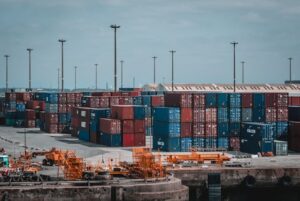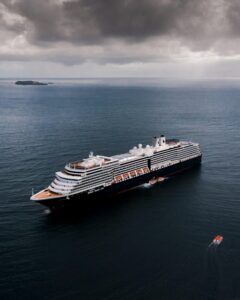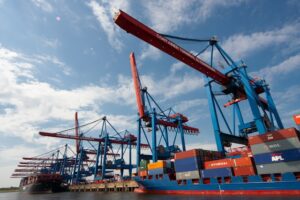Ⅰ. INTRODUCTION
Maritime transportation is an inherently high-risk activity and maritime accidents inevitably have commercial, environmental, and legal consequences. Salvage operations following maritime accidents are of great importance not only in terms of ensuring the safety of the ship and cargo, but also in terms of preventing environmental disasters. In this framework, the content of salvage contracts and the principles underlying these contracts have been the subject of constant evaluation both in practice and in doctrine.
One of the basic principles governing maritime salvage contracts is the principle of “No Cure – No Pay” (no success – no payment). This principle states that the rescuer is entitled to remuneration only if he/she performs a successful rescue. This regulation has been effectively implemented for many years as an incentive mechanism, especially in risk-based work. However, increasingly extreme weather conditions due to climate change are increasing the frequency and complexity of maritime accidents, making the success of rescue operations more uncertain and costly. Existing contractual models and traditional principles are inadequate in this new risk environment, leading to criticism that actions that cannot be directly measured in monetary terms, such as environmental rescue, are not adequately rewarded under contract.
This article aims to outline the historical development and current application of the “No Cure – No Pay” principle, analyse the impact of the climate crisis on marine salvage contracts, and address the extent to which traditional models are adequate in this new era.
ⅠⅠ. LEGAL BASIS OF SALVAGE CONTRACTS
Salvage contracts are specialized contracts that regulate the activities carried out for the rescue of ships, cargo or other goods in distress at sea. The legal foundation of these contracts is based on both international conventions and domestic law regulations.
Within the scope of international regulations, the main text on maritime salvage activities is the International Convention on Salvage, 1989 (“Salvage Convention 1989”). Salvage is defined in Article 1 of the Convention as “any act or activity undertaken to assist a vessel or any other property in danger in navigable waters or in any other waters whatsoever.” The Salvage Convention 1989, while preserving the principle of “No Cure – No Pay”, places particular emphasis on salvage activities aimed at protecting the environment. In this context, the Salvage Convention introduced the concept of “special compensation” in order to ensure that the activities of salvors for the prevention of environmental damage are also compensated (Salvage Convention 1989, Article 14). Under Article 14, even if a rescuer is not entitled to remuneration under the “No Cure – No Pay” system, he or she can claim special compensation for reasonable and proportionate expenses incurred to protect the environment from the threat of serious damage or pollution. With this arrangement, the Convention protects interventions that serve the public interest and environmental sustainability, rather than focusing solely on the economic consequences of the salvage activity. Actions taken to prevent damage to the environment caused by the ship’s cargo or fuel are incentivized through compensation for reasonable expenses incurred by the salvor, even if they are not successful. Such compensation must be proportionate to the effort to prevent the damage and is limited so as not to cover malicious or excessive expenditure.
In international maritime practice, the most widely used model for salvage contracts that embodies these principles is the standard form of contract known as Lloyd’s Open Form (“LOF”). Although LOF is based on the principle of “No Cure – No Pay”, it stands out with its rapid applicability in emergencies, standardized arbitration procedure and sensitivity to environmental risks. The SCOPIC (Special Compensation P&I Clause) clause, which was integrated into the LOF since 2000, aims to complement the inadequate aspects of Article 14 of the Salvage Convention 1989 in practice and makes salvage activities related to the elimination of threats to the environment more concretely remunerable. According to the SCOPIC clause, even if there is no “danger of environmental damage”, salvors can always invoke this clause if they prefer instead of Article 14. Under SCOPIC, environmental interventions by the salvor are remunerated based on fixed tariffs and these fees are covered by the shipowner’s P&I Club. Thus, interventions to prevent environmental damage are economically supported regardless of the outcome and an incentive mechanism is created for the protection of the marine environment.
In terms of Turkish maritime commercial law, maritime salvage contracts are regulated under Articles 1298 to 1319 of the Turkish Commercial Code No. 6102 (“TCC”). The TCC stipulates that the salvage activity must be aimed at the salvage of the ship, cargo and other goods, and that the salvor may claim remuneration if this activity has yielded a beneficial result. Within this framework, Turkish law is based on the principle of “No Cure – No Pay”.
Similar to the international regulations, Article 1312 of the TCC subjects the rescue activities performed in cases of threat of environmental damage to an independent remuneration regime under the name of “special compensation”. According to this article, a salvor is entitled to claim from the shipowner the reasonable expenses incurred in order to prevent or limit environmental damage, even if the salvor has failed to obtain an adequate remuneration in accordance with the general provisions. This provision is largely in line with Article 14 of the Salvage Convention 1989 and explicitly recognizes the remuneration mechanism for environmental salvage activities in Turkish law. However, in practice, it is observed that this provision has not been used effectively enough, concrete case law on environmental salvage activities is limited and special compensation claims are not systematically evaluated.
ⅠⅠⅠ. OPERATION AND LIMITS OF THE “NO CURE – NO PAY” PRINCIPLE
According to the “No Cure – No Pay” principle, the rescuer can charge a fee if the rescue is successful, but no payment is made if the intervention is inconclusive. Thus, rescuers are rewarded only for successful interventions, which encourages them to work quickly, effectively, and result-oriented. However, this system excludes rescue operations that do not result in success but involve significant effort, cost and risk, and may also exclude interventions to prevent environmental risks. This approach, which focuses only on the salvage of items of economic value, especially in accidents on ships carrying dangerous cargoes, may lead to unreciprocated interventions to protect the environment. Moreover, disputes frequently arise between the parties regarding the determination of the salvage fee and the claim for compensation. These disputes often centre on the success of the salvage operation, the reasonableness of the costs and the evaluation of the interventions to prevent environmental damage. Considering the increasing operational complexity, technological needs and extreme weather conditions in modern maritime activities, the application area of the “No Cure – No Pay” principle is gradually narrowing, and the fixed and unidirectional structure of this principle is insufficient to respond to multidimensional maritime rescue scenarios.
Ⅳ. ALTERNATIVE CONTRACT MODELS AND INTERNATIONAL PRACTICES
Conventions based on the classical “No Cure – No Pay” principle constitute the historical basis of maritime rescue law, but they are insufficient, especially in the light of new risks triggered by climate change. In the face of these shortcomings, various international contractual models have been developed, particularly in English maritime law. The main purpose of these models is to ensure a transition to a remuneration system that encourages the protection of not only material property, but also the environment and the public interest.
A. Lloyd’s Open Form (LOF)
The above-mentioned LOF, published by Lloyd’s of London, is the most widely used standard rescue agreement today. The main feature of the LOF is that, while maintaining the principle of “No Cure – No Pay”, it contains clauses that reduce the uncertainties encountered in practice and provide the parties with a rapid response ground.
LOF is characterized by the following elements:
- Fast acceptance and response: LOF contracts are usually signed on the spot and do not require any negotiation process. This provides practicality in situations where an emergency response is required.
- International arbitration system: Disputes arising under LOF contracts are resolved before the Lloyd’s Salvage Arbitration Branch in London, providing a predictable and stable adjudication process.
- Opportunity to reward environmental rescue: In the post-2000 versions, environmental rescues are now also chargeable under the SCOPIC provisions.
B. SCOPIC Clause (“Special Compensation P&I Clause”)
SCOPIC is a clause integrated into the LOF system that allows the salvor to claim special charges and operating expenses under certain conditions, even if the salvor does not perform a successful recovery. The main features of SCOPIC are:
- Special compensation mechanism: The rescuer can claim “special compensation” by documenting the costs of its interventions to prevent the environmental disaster.
- Covered by insurance: These costs are covered by the P&I club for the vessel on which the salvage activity is carried out.
- Set tariffs: Charges under SCOPIC are subject to predetermined fixed tariffs based on vessel, material, and manpower, which provides predictability.
- Environmental focus: SCOPIC’s basic philosophy is to consider the protection of the marine environment as a legally recognized recovery objective.
C. American Law
In the US maritime law system, awards for environmental salvage activities are recognized by courts under the headings of “public interest salvage” or “quasi-contractual salvage”; in such cases, courts may award a reasonable fee to the salvor on the grounds of public interest.
Ⅴ. CONCLUSION AND SUGGESTIONS
Extreme weather events triggered by the global climate crisis have caused marine casualties to become more frequent and complex, clearly demonstrating the limitations of traditional systems, especially in rescue contracts. The current structure, based on the principle of “No Cure – No Pay”, cannot sufficiently incentivize efforts to prevent environmental disasters, with only a result-oriented remuneration model. Today, subjecting rescue activities that serve multidimensional values such as environmental protection, public safety and economic sustainability to a reward system based solely on success reduces the effectiveness of these activities and lowers the level of incentives for actors to intervene.
In this context, instead of a merit-based remuneration system, a mixed remuneration model could be developed, where fixed costs are covered and bonuses are paid based on the outcome. In this way, not only the outcome of the rescue activity, but also the intervention process, the level of risk and the environmental contribution could be considered in the remuneration regime. Similarly, it is important to recognize environmental protection interventions as an independent type of rescue in the legal sense and to set specific remuneration principles for these activities to protect both the public interest and the rights of rescuers. In particular, the integration of a SCOPIC-like remuneration regime into domestic law will increase the sustainability of environmental rescue initiatives. Insurance and reinsurance systems also need to be restructured. The environmental liabilities and costs that both ship and cargo owners and salvors may face should be regulated in more detail within the scope of insurance coverages; P&I clubs should be more broadly included in environment-focused obligations. Similarly, the scope of insurance contracts and payment obligations for salvage activities should be clarified at the legislative level.
In conclusion, the approach of measuring the rescue activities carried out in the face of maritime accidents solely by economic value is incompatible with today’s maritime practice shaped by the effects of climate change. Re-evaluation of the current “No Cure – No Pay” system on the axis of environmental protection and public interest, and the development of more flexible, multi-dimensional contract and compensation models in line with contemporary needs is necessary not only for the legal order, but also for the integrity of the maritime sector and the protection of the marine environment.











